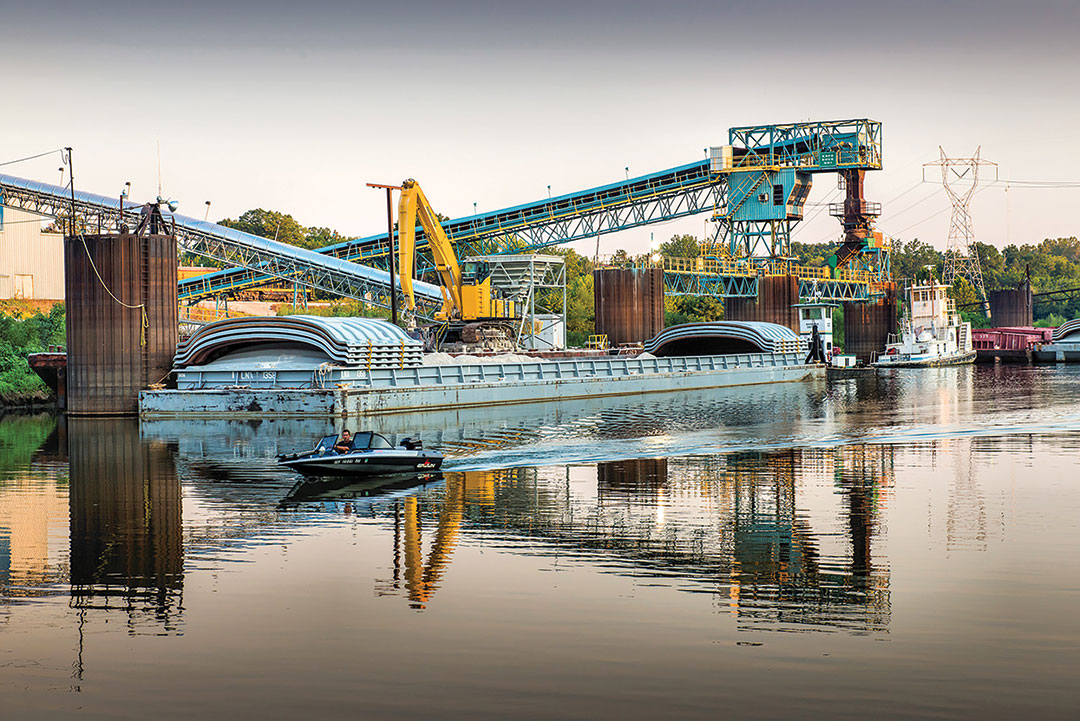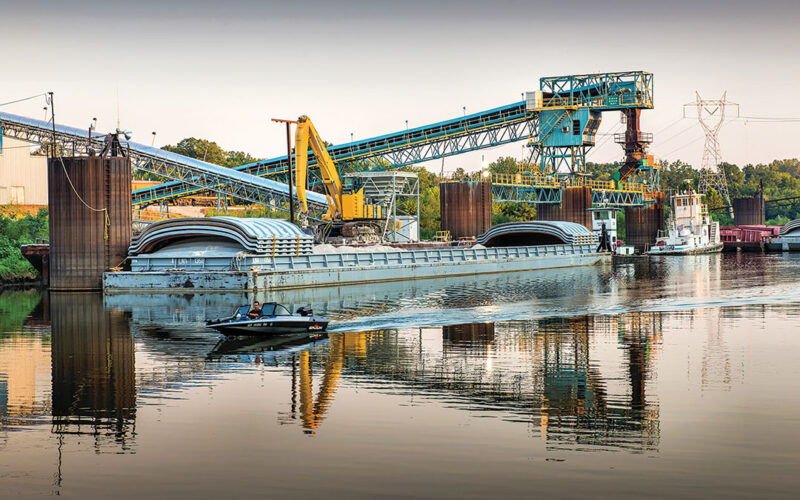
Every year, in excess of 1.6 billion tons of freight, valued at $2.5 trillion, flows in and out of Illinois, making it one of the top three states in the nation for freight activity.
Earlier this year, the Illinois Department of Transportation announced some $200 million in investment funds to energize 22 projects that aim to improve the movement of freight, among them projects that benefit two bustling river ports.
The grants include approximately $10 million – $3.6 million for dock improvements at America’s Central Port in Madison County; $2.1 million for road improvements at America’s Central Port; and $4.3 million to the Kaskaskia Regional Port District for congestion reduction and safety engineering and construction.
Dennis Wilmsmeyer is Executive Director at America’s Central Port, located on the Mississippi River at Granite City, Il., near Lock and Dam 27 just south of St. Louis.
Its facilities, he said, have access to six of the nation’s seven Class-I railroads and “delivers the highest per mile efficiency for shipping bulk commodities to the Gulf of Mexico” with shippers moving barged commodities from steel coil and corn to fertilizer and lumber on “free-flowing water all the way to the Gulf Coast.”
Wilmsmeyer offered appreciation for the Illinois Department of Transportation’s recognition of the need for funding and its steering the federal money to the projects most in need. The current port infrastructure largely dates to the 1960s so, “the need has been there for a long time.”
The funding, he said, will be used to demolish an old rail trestle and improve the dock, specifically expanding the sheet pile wall to get more room to facilitate truck moves. The same competitive grant program is also funding construction of a final piece of the main road to the port’s industrial park, a former 24-acre army facility.
Most of the roads serving the port “were old oil-and-chip that hadn’t been upgraded.” The funding is also being used to expand and improve access to the industrial park with the combination of improvements providing “the opportunity to get more product to the river,” he said, adding that “there are now lots of good options to increase traffic and move it more easily.”
The funding has also produced smiles in Red Bud, Il., home of Kaskaskia Regional Port District.
Edward Weilbacher, the District’s General Manager, said facilities there feature a 50-ton overhead crane and dump dock, as well as ready access to connections with the Canadian National Railroad. Barge service is provided by Southern Illinois Transfer Co. (SITCO).
Nearby steel coil processors receive and ship their finished coil steel via river barges. There is also a fertilizer plant and an outbound gypsum processor – all of which adds up to nearly a quarter million tons of freight each year.
Already seeing increased traffic, Weilbacher said the port expects a second rail line loop connecting to one of its facilities that will generate another 2 million tons of outbound goods and lessen the number of truck movements to the port’s “Number 2” facility.
“Because of congestion and volume, we’ve received a grant to double track beneath the crane and add a longer track and more turnouts that will permit the movement of rail cars from one track to another more easily,” he said.
Another tenant wants to build an additional plant next door that could potentially add 250,000 tons to port volume. As a result, several million dollars in additional grant requests will be filed in the near future while several applications are being submitted to fund additional infrastructure improvements available through the Maritime Administration’s Marine Highways program.
According to Weilbacher, there are plans to remove the three existing fertilizer domes to allow the plant to expand by another 40 percent, which will allow operations in all weather conditions.
In addition, he noted, the port is working on a Section 107 application of the 1960 River and Harbor Act, which, it is hoped, will lead to the U.S. Army Corps of Engineers dredging and restoring a fleeting area that has become silted over the years.
All in all, he concluded, the planned improvements will offer shippers “additional cargo capacity which should mean greater economies of scale.”
Commenting on its proximity to the Kaskaskia River and the associated port, City of Red Bud Mayor, Susan L Harbaugh, said the funding matters to Red Bud because the port “gives businesses in our area a unique water highway transportation option, and “one more tool in our toolbox to promote new businesses and sustain existing employers.”

